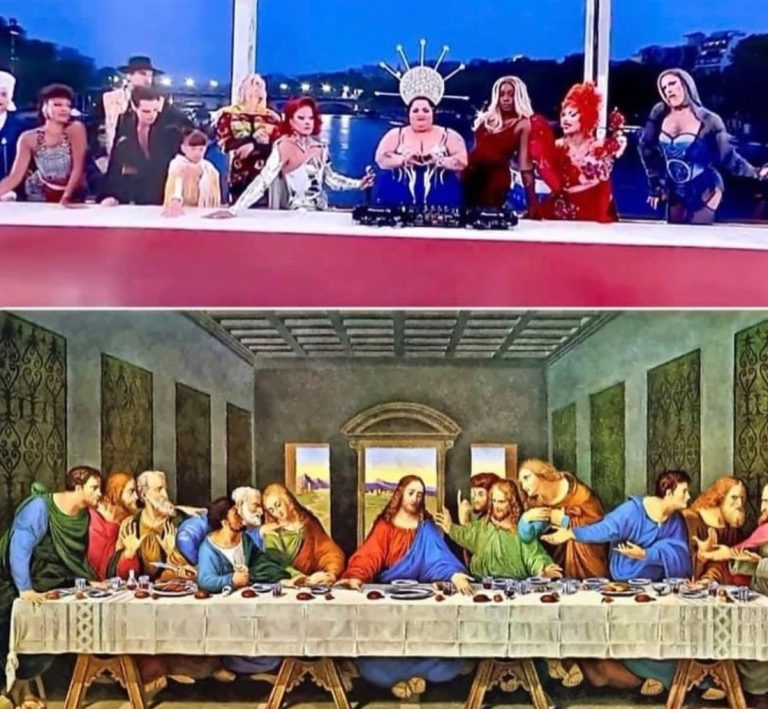
Paris, France. In a groundbreaking fusion of art, culture, and sports, “The Last Supper: A Drag Queen Spectacle” took center stage at the recent Olympics, capturing the world’s attention and igniting a dynamic conversation about diversity, inclusion, and the power of humor. This theatrical piece reimagined Leonardo da Vinci’s iconic painting, infusing it with modern sensibilities and a vibrant display of drag artistry. The performance, featuring a talented ensemble of drag queens from around the globe, offered a fresh and provocative interpretation of The Last Supper, challenging traditional norms and celebrating the rich tapestry of human expression.
Purpose and Intent
The “Last Supper: A Drag Queen Spectacle” was not just an artistic endeavor but a cultural statement designed to promote diversity and inclusion, aligning closely with the Olympic values of unity and global harmony. The creators sought to use the platform of the Olympics to highlight the importance of accepting people from all walks of life, irrespective of their gender identity, sexuality, or cultural background. By casting drag queens in the roles of Jesus and his apostles, the performance aimed to challenge stereotypes and encourage audiences to rethink traditional narratives.
The production utilized humor and creativity as key tools to engage viewers, making complex themes accessible and fostering an inclusive atmosphere. The vibrant costumes, lively performances, and clever dialogue were crafted to celebrate the art of drag as a powerful form of storytelling and social commentary. The decision to reinterpret such a well-known religious and cultural scene was intended to spark dialogue and reflection, encouraging a deeper understanding of the evolving nature of traditions and the universal values of love, acceptance, and compassion.
Global Reaction
The global reaction to the performance was as diverse as the audience it reached. On the one hand, many praised the production for its boldness and innovation. Supporters viewed it as a celebration of LGBTQ+ representation and a courageous step towards normalizing diverse forms of identity and expression. They highlighted how the performance successfully brought important social issues to a mainstream, global audience, using the universal language of art and humor to bridge cultural divides.
Conversely, the performance also faced criticism, particularly from more conservative or religious groups. Some viewers felt that the reinterpretation of a sacred event was inappropriate or disrespectful, arguing that it trivialized deeply held beliefs. This reaction underscores the challenges of balancing artistic expression with respect for religious and cultural sensitivities.
Our Perspective
From our standpoint, the “Last Supper” drag queen performance represents a significant moment in the intersection of art, culture, and social advocacy. It exemplifies the belief that humor and diversity are not just desirable but essential in creating a more inclusive and empathetic society. The performance demonstrated that while art may provoke and challenge, it also has the potential to heal, educate, and unite. The conversations sparked by this production—both positive and critical—are a vital part of the journey towards greater understanding and acceptance.
#LastSupperDragShow, #DiversityInclusion, #OlympicTheater, #DragQueens, #BreakingBarriers, #LGBTQArt, #CulturalReimagining, #HumorAndUnity, #GlobalStage, #InclusiveArt
TAGS: Performance, Olympics, Theater, Drag Queens, Diversity, Inclusion, LGBTQ, Culture, Art, Controversy, Tradition, Humor, Global Reactions, Social Commentary, Identity Politics